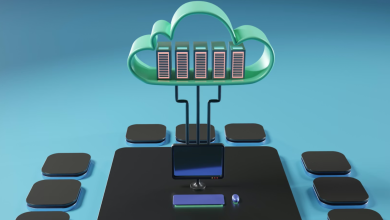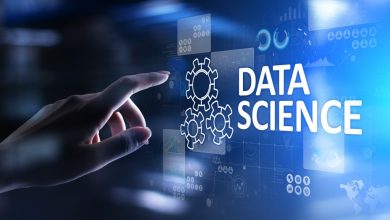
The Problem Nobody Talks About
I was in another startup accelerator meeting, watching pitch after pitch fall apart for the same reason. These weren’t bad ideas – they were brilliant. But they all hit the same wall.
One presenter had just spent four years at Stanford building an AI that could spot diabetic eye disease from smartphone photos. Imagine the impact – millions of people in places without eye doctors could get screened instantly. The technology worked beautifully in her lab.
Then the investors started asking about data. Her confidence just evaporated. “We trained it on about 2,000 images from our university hospital,” she admitted. “But to work reliably across different populations and phone cameras, we’d need maybe 50,000 diverse images.”
Everyone knew what that meant. Google, Microsoft, Amazon – they have millions of medical images locked away. This breakthrough would stay trapped in academia unless she could somehow access data that’s completely off-limits.
The next presenter had built an AI for predicting crop failures weeks in advance potentially saving millions from famine. Same story, different domain. Agricultural data was scattered across government agencies, agribusiness companies, and research institutions, each protecting their information like it was classified.
Sitting there, I realized we weren’t dealing with a technology problem. The AI worked fine. We had a data access problem.
What I Found Everywhere
I spent months talking to researchers, founders, and data scientists. Same story, different details. The companies with massive datasets – Google, Amazon, Facebook, Microsoft – keep building more powerful AI. Everyone else scraps for leftovers.
It’s not just about volume either. A researcher at MIT was trying to develop AI for rare disease diagnosis. “We can get maybe 100 samples of a rare genetic condition from our hospital,” she told me. “But we need samples from Africa, Asia, Europe to build something that works globally. That data exists in hundreds of hospitals, but they can’t share it because of different systems, formats, and legal barriers.”
The irony stung. AI promises to democratize intelligence, but access to AI’s fuel – data – has never been more concentrated.
How I Got Started on This
This frustration drove me into a years-long journey that eventually led to co-authoring “Advanced Data Engineering Architectures for Unified Intelligence.” I wasn’t trying to write theory – every framework came from trying to solve these data access problems.
The breakthrough insight was thinking about data infrastructure like public utilities. What if only Google controlled electricity? What if Amazon owned all the water pipes? That’s essentially where we are with AI training data.
I started working with organizations willing to experiment with genuine data sharing for AI development.
My First Real Success
My first big breakthrough came when I started working with organizations that had the same fundamental problem – they each had pieces of valuable data, but not enough to build robust AI on their own.
The challenge wasn’t just technical. There were legal barriers (different privacy regulations), technical barriers (incompatible data formats), and organizational barriers (different ways of categorizing and labeling information).
Working with these teams, we developed what we called a “federated approach.” Instead of centralizing all the data in one place (which often wasn’t legally possible anyway), we created systems where AI models could learn from distributed datasets without the raw data ever leaving its original location.
The concept is simple: instead of bringing all the data to the AI, we send the AI to visit each data source.
When Everything Clicked
Six months later, the results exceeded everyone’s expectations. The collaborative AI system performed significantly better than any single organization could achieve alone. Even better, it worked across different data sources, different formats, and different organizational setups.
But the real breakthrough wasn’t just the performance metrics. One of the project leads called me excited: “We’re not just sharing data anymore. We’re sharing intelligence. The patterns the AI learned from our regional data are now helping teams in completely different locations solve problems they’d never encountered before.”
That’s when I understood what we were really doing. We weren’t just building better AI. We were democratizing expertise and knowledge across organizational boundaries.
What I Learned About Making Data Sharing Work
Through projects like this, I figured out eight things you need to make data sharing work for AI.
First, protect privacy. You can’t share data without keeping people’s information safe. There are fancy techniques like “differential privacy” and “federated learning” that let you share insights without sharing personal details.
Second, make everything connect the same way. Data might live in a thousand different systems, but AI needs to access it the same way everywhere. Like how every phone charger is USB now.
Third, be honest about quality. When you’re training AI on data from different places, you need to know what you’re getting. Is this medical scan from a top hospital or a rural clinic with old equipment? Both are useful, but AI needs context.
Fourth, decide who’s in charge. Who gets to decide what data gets shared? How do you solve arguments? These aren’t tech questions – they’re people questions.
Fifth, make it worth everyone’s time. Organizations won’t share data just to be nice. There need to be clear benefits: better AI, shared research, or access to the network.
Sixth, make sure everyone speaks the same language. A “customer” in one company might be a “client” in another. AI needs to understand that these mean the same thing.
Seventh, work with live data. Old data is yesterday’s news. Modern AI needs to learn from fresh information while keeping all the privacy protections.
Eighth, use open tools. The systems for sharing data can’t be controlled by the same companies that created the data monopoly problem. They need to be built with tools everyone can use.
Changing How Organizations Work
The tech stuff was only half the problem. The bigger change was getting organizations to work differently. Traditional data teams, focused on internal reports, weren’t ready for this new world of collaborative AI.
I started seeing organizations create new jobs: “Data Product Managers” who think about external users, “AI Ethics Officers” who handle sharing agreements, and “Federated Learning Engineers” who specialize in distributed AI training.
The best projects had weird team combinations: privacy lawyers working with machine learning engineers, anthropologists helping data architects understand cultural biases in global datasets.
Learning from Mistakes
Not everything worked, and the failures taught me as much as the successes. The biggest mistake was treating data sharing as just a tech problem. Installing fancy software without fixing organizational culture, legal frameworks, or incentives was like building a highway without traffic laws.
Another common failure was trying to do too much at once. Organizations that tried to share all their data immediately got overwhelmed. The successful projects started small, with specific problems and clear benefits.
The worst failures happened when teams ignored the human side. AI might be artificial, but it learns from human knowledge. Sharing data without addressing biases, cultural differences, and power imbalances just made existing problems bigger.
How to Get Started
For organizations wanting to try this data sharing approach, here’s what works:
Start where everyone wins. Find partners who have different data but shared goals. Don’t try to convince competitors to give away their best stuff. Look for situations were working together helps everyone.
Build trust slowly. Start with low-risk, high-value sharing. Public datasets, research data with names removed, or fake datasets based on real patterns. Prove your systems and rules work before handling sensitive stuff.
Invest in privacy tech. The tools for protecting privacy while sharing insights aren’t just academic anymore. They’re real tools you can use today.
Design for connection from day one. Don’t build another isolated system with fancy new tech. Build systems that can work with existing infrastructure and future standards.
Set clear rules. Who makes decisions about data access? How do you solve disputes? What happens when laws change? Answer these questions before you start sharing, not after.
What Success Looks Like
You’ll know this is working when small teams start getting results that used to require Google-sized resources. When a medical researcher in Kenya can train AI using hospital data from around the world. When a climate scientist can access weather data from every continent for better predictions.
I’ve seen this happen again now. That Stanford researcher with the eye disease AI eventually connected with ophthalmologists worldwide. Her AI system now screens millions of patients across six continents. The crop prediction system helps agriculture departments in 23 countries, using weather, soil, and satellite data that no single organization could have collected.
Why This Matters Now
The companies and countries that figure out data sharing will lead the next wave of AI innovation. We’re moving past the era were having the most data guarantees AI success. Instead, the winners will be those who can coordinate intelligence across shared datasets while protecting privacy and ensuring fairness.
In my book “Advanced Data Engineering Architectures for Unified Intelligence,” which I co-authored, we called this vision “unified intelligence” – AI systems that learn from humanity’s collective knowledge while respecting individual privacy and organizational boundaries. It’s not just a better way to build AI. It’s a fairer way to share AI benefits.
How This Changed Me
Writing that book and implementing these ideas completely changed how I think about AI development. I used to focus on making individual models and datasets better. Now I think about connecting intelligence across global networks of data and expertise.
The real success isn’t just better accuracy or faster training. It’s when AI development becomes accessible to researchers and organizations that could never afford massive data collections.
The Future We’re Building
Once you see this transformation happen – and I’ve watched it dozens of times now – you can’t go back to the old way of thinking about AI development. The future doesn’t belong to whoever hoards the most data. It belongs to whoever can connect humanity’s distributed intelligence into systems that help everyone.
Democratizing AI isn’t just about fairness, though that matters a lot. It’s about unlocking human potential like never before. When every researcher, every startup, every organization can access the data they need to build intelligent systems, we all benefit from their innovations.
That’s the future I’m working toward – where artificial intelligence amplifies human intelligence not just for a few tech giants, but for anyone with a problem worth solving and the drive to solve it.




